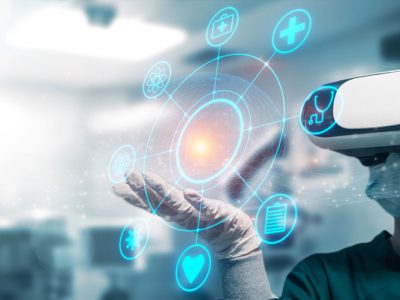
Health 3.0 is a health-related extension of the concept of Web 3.0 whereby the users interface with the data
The metaverse has the potential to change the way we collaborate with manufacturers and join forces with others. Health 3.0 is a health-related extension of the concept of Web 3.0 whereby the users’ interface with the data and information available on the web is personalized to optimize their experience. However, before we can understand the metaverse’s impact, we must first understand just what it is. Even though the time period was pulled from the pages of science fiction, the metaverse is a real thing. It’s already here, and while it may take a few years for it to reach its full potential, healthcare entrepreneurs should begin planning for a metaverse future right now.
What do you mean by Metaverse?
Metaverse is an augmented virtual environment created by the merging of physical and cyberspace, in which users may interact inside the augmented reality, virtually meet one another, and immerse themselves in virtual activities that provide real-world experiences. Metaverse in Healthcare can enable various functions that can be explored like; Virtual Tour for a Hospital Design, using augmented reality in surgical procedures to reduce risks, doctor consultation without visiting physically, etc.
While Metaverse is still emerging, it has great promise in healthcare, combining technologies such as Artificial Intelligence, VR, Augmented Reality, IoMD, Web 3.0, intelligent cloud, edge, and quantum computing, as well as robots, to give new avenues in healthcare. The metaverse has the potential to upend our passive browsing on Instagram, Facebook, and TikTok by allowing us to live, play, and interact in a 3D reality.
The metaverse is a term that refers to a number of layers that make up the Web 3.0 experience:
• The internet, which already connects us, serves as a foundation. Infrastructure is a decentralized system based on blockchain technology that allows developers and builders to build.
• The top, more visible layer of content is where the average user can engage and spend time.
What does it signify for healthcare companies?
Health 3.0–a more tailored, optimal approach to care—is expected to be driven by the metaverse, which was established as part of Web 3.0. Content in the metaverse relates to numerous sensory receptors due to its intrinsically immersive nature, allowing HCPs to analyze, engage, and address all areas of a person’s health. Healthcare brands may be able to integrate themselves within virtual metaverse worlds in order to reach patients where they are with personalized patient experiences.
The possibilities appear to be limitless. Here are a few examples of healthcare brand applications:
1. Healthcare Education and training: Using Augmented Reality and Virtual Reality platforms, healthcare brands may contact HCPs all over the world to deliver demonstrations and training. AR/VR training can let people connect with providers in far-flung areas and encourage peer collaboration to help them innovate. In several medical colleges in the United States, AR/VR training is already in use.
2. Patient communities: Metaverse patient communities can help patients connect and engage, especially those who are isolated due to their illnesses (e.g., cystic fibrosis, rare diseases, the immunocompromised).
3. Brand communication with a high level of touch: The metaverse provides an immersive element to disease and education initiatives. Brands can conduct virtual patient and industry events for individuals who can’t attend in person using metaverse platforms. They can reach viewers with innovative ad formats such as virtual billboards, sponsored virtual experiences, integrated brand installations, and sponsored content.
4. Telemedicine: The metaverse has the potential to transform telemedicine by combining technologies such as haptic touch and augmented reality into virtual doctor’s appointments, making them more customized and human. Patient and HCP resources can be evolved to smoothly incorporate into digital telehealth sessions.
5. Prevention and diagnosis: New body-scanning and vitals-tracking technology, paired with the power of AI and machine learning, could power health solutions in the metaverse. Brand-supporting tools including treatment administration guidelines, symptom trackers, and clinical trial adherence programs can all benefit from this technology.
How should the Brands be Ready for this situation? What should they do?
Marketers will want to ask and answer these questions to acquire a deeper knowledge of your audience’s digital behaviors as healthcare brands consider how to evolve content in a 3D world, like:
What platforms and channels are currently being used by your customers?
What are they searching for in terms of support, services, products, and community? How can this new technology fill a gap in the market?
What are the customer habits you’re aiming to encourage or change?
Integrating new technology into your communications ecosystem is exciting, but messaging must be captivating, consistent, and valuable to your audience to be successful. You’ll also need to put in place safeguards to ensure that privacy and HIPPA regulations are followed.
Brands that establish smart strategies today for future integration stand to benefit the most from the Health 3.0 movement as the metaverse expands.



















